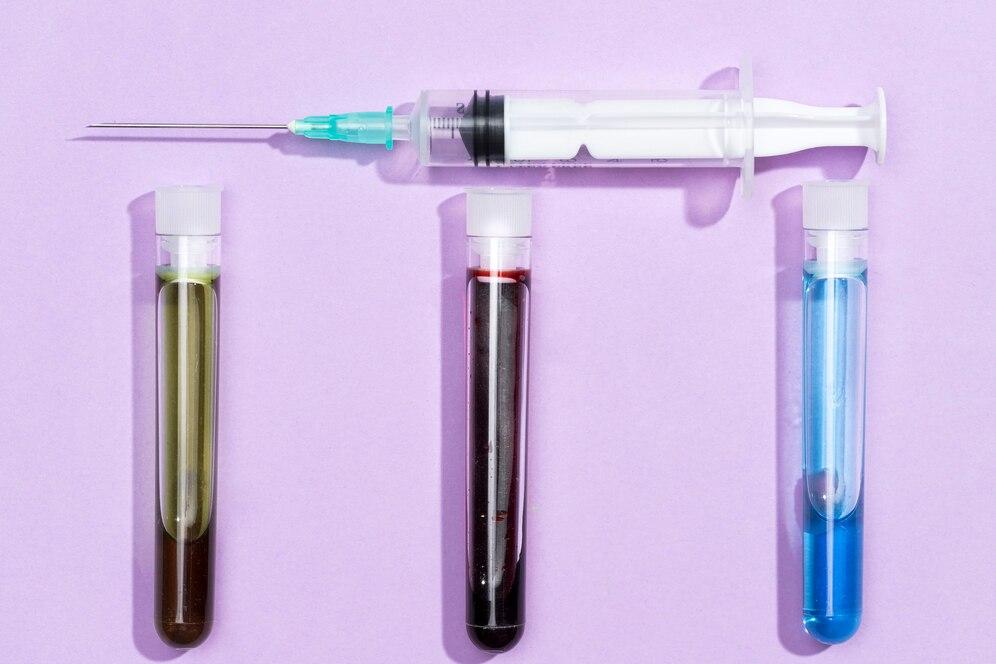In Vitro Diagnostics Market Advancements in Molecular Diagnostics

The in vitro diagnostics (IVD) market is undergoing significant advancements driven by technological innovations, increasing demand for precision medicine, and the integration of digital health solutions. These innovations are revolutionizing disease diagnosis, treatment monitoring, and overall healthcare efficiency. From molecular diagnostics to artificial intelligence (AI)-powered analytics, IVD technologies are evolving to provide more accurate, faster, and cost-effective diagnostic solutions. This article explores key innovations shaping the IVD market and their implications for the future of healthcare.
Advancements in Molecular Diagnostics
Molecular diagnostics has emerged as a game-changer in the IVD market, enabling the detection of genetic mutations, infectious diseases, and cancer biomarkers with high precision. Techniques such as polymerase chain reaction (PCR), next-generation sequencing (NGS), and CRISPR-based diagnostics have improved the sensitivity and specificity of tests. These innovations allow for early disease detection, targeted therapies, and personalized treatment approaches.
Artificial Intelligence and Automation
AI and machine learning are transforming IVD by enhancing diagnostic accuracy and efficiency. AI-powered algorithms analyze large datasets to detect patterns, reducing the likelihood of human error in test interpretation. Automation in laboratory workflows, including robotic sample processing and AI-assisted image analysis, accelerates test turnaround times and reduces operational costs. These advancements improve laboratory productivity and support better clinical decision-making.
Personalized Medicine and Precision Testing
The shift towards personalized medicine is driving the development of precision diagnostic tools tailored to individual genetic and molecular profiles. Companion diagnostics, which guide targeted therapy selection, are becoming increasingly important in oncology and chronic disease management. By identifying specific biomarkers, healthcare providers can optimize treatment plans, leading to improved patient outcomes and reduced adverse effects.
Point-of-Care Testing and Rapid Diagnostics
Point-of-care (POC) testing is enhancing accessibility to diagnostics by providing rapid results outside traditional laboratory settings. Portable and handheld diagnostic devices enable real-time disease detection in clinics, pharmacies, and even homes. Innovations in lateral flow assays, microfluidics, and biosensors have expanded the capabilities of POC testing, making it particularly valuable for managing infectious diseases, diabetes, and cardiovascular conditions.
Next-Generation Sequencing and Genomic Innovations
NGS is revolutionizing the IVD market by enabling comprehensive genomic analysis for disease risk assessment, early detection, and treatment planning. Advances in sequencing technologies have reduced costs and increased throughput, making genomic testing more accessible. Liquid biopsy, a non-invasive method that analyzes circulating tumor DNA (ctDNA) in blood samples, is gaining traction as an alternative to traditional tissue biopsies for cancer detection and monitoring.
Integration of Digital Health and Telemedicine
The convergence of IVD with digital health and telemedicine is transforming how diagnostic data is collected, shared, and interpreted. Remote patient monitoring through connected diagnostic devices allows real-time health tracking and early intervention. Cloud-based platforms facilitate seamless data integration, improving collaboration among healthcare professionals. Telemedicine services leveraging digital diagnostics enhance accessibility, particularly in remote and underserved regions.
Innovations in Biomarker Discovery
Biomarker discovery is expanding the scope of IVD by identifying novel indicators for various diseases. Advances in proteomics, metabolomics, and immunoassays have led to the development of highly specific diagnostic tests. Biomarker-based diagnostics play a crucial role in early disease detection, prognosis assessment, and monitoring treatment response, particularly in oncology, neurology, and autoimmune disorders.
Lab-on-a-Chip Technologies
Lab-on-a-chip (LOC) technology miniaturizes laboratory functions onto microfluidic devices, enabling rapid and high-throughput diagnostic testing. These compact platforms integrate sample preparation, analysis, and result interpretation within a single chip, reducing the need for complex laboratory infrastructure. LOC devices offer significant advantages in resource-limited settings and emergency diagnostics, where quick and accurate test results are critical.
Future Prospects and Emerging Technologies
The future of the IVD market is poised for further advancements driven by continuous research and innovation. Emerging technologies such as quantum biosensors, single-cell analysis, and 3D bioprinting hold the potential to revolutionize diagnostic capabilities. Additionally, the development of portable, smartphone-integrated diagnostic devices will enhance consumer-driven healthcare and empower individuals to monitor their health proactively.
Conclusion
Innovations in the in vitro diagnostics market are reshaping healthcare by enabling early disease detection, personalized treatment approaches, and improved patient management. Technological advancements in molecular diagnostics, AI, automation, point-of-care testing, and digital health integration are enhancing diagnostic accuracy and accessibility. As research continues to drive the evolution of IVD, these innovations will play a pivotal role in improving global healthcare outcomes and transforming the future of diagnostic
- Art
- Causes
- Crafts
- Dance
- Drinks
- Film
- Fitness
- Food
- Игры
- Gardening
- Health
- Главная
- Literature
- Music
- Networking
- Другое
- Party
- Religion
- Shopping
- Sports
- Theater
- Wellness
- Politics
- IT
- Relationship
- Blockchain
- NFT
- Crypto
- Fintech
- Automobile
- Faith
- Family
- Animals
- Travel
- Pets
- Coding
- Comedy
- Movie
- Игра
- Computer



